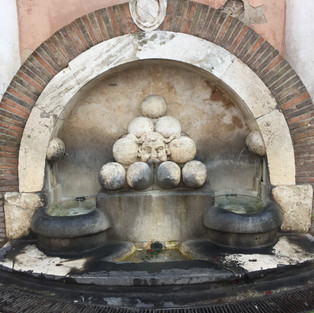One of the most important principles of design that an artist has to consider is symmetry which creates a balance and a sense of harmony or asymmetry which creates imbalance or gives one section more emphasis than another. The architecture of Rome and much of the environment is full of symmetrical balance.























Love this observation of symmetry! Wonderful. I love Rome. I had the pleasure of exploring Rome after I took a course in Baroque art at CCA. I became a fan of Bernini and how he changed architecture in Rome during the Counter Reformation. Yahoo!